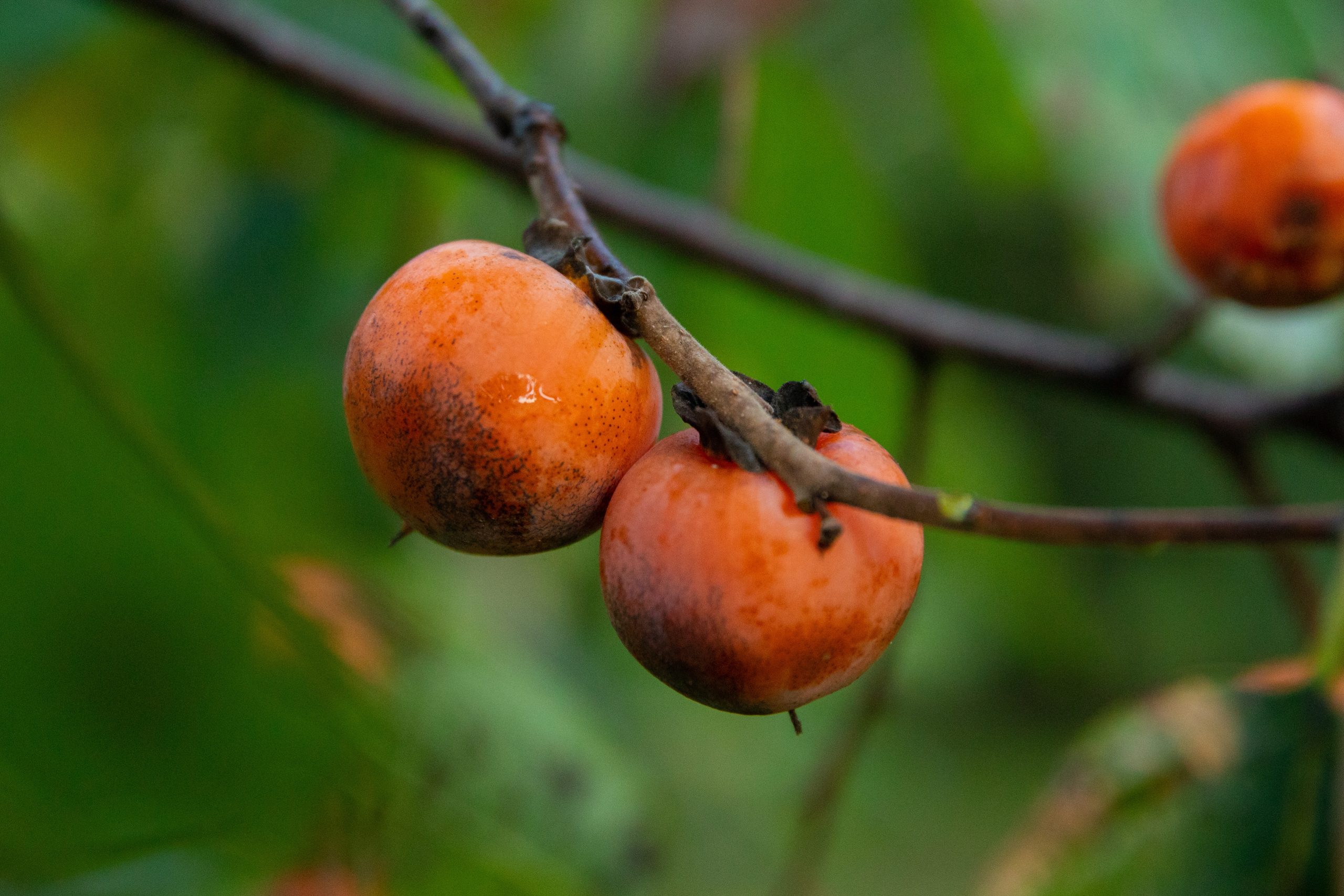American Persimmon Seedling
Diospyros virginiana
$22.95 – $27.95
2025 Shipping Season
We are accepting orders to ship in early June & for Fall delivery.
For more information see the Ordering & Shipping section below.
Wild native persimmons are one of the very best trees for attracting deer and wildlife. This native tree is adaptable to many climates, and has a natural immunity to disease and insects. The American persimmon thrives in a wide variety of conditions, from wet or sandy soils, to lowlands or uplands.
Deer actively seek out persimmon trees, eating every fruit that is within reach or as soon as they hit the ground. Leaves and twigs are also eaten by deer in the fall and winter, and the fruit is eaten by other wildlife like squirrel, fox, bear, coyote, raccoon, opossum, and various birds, including quail, wild turkey, cedar waxwing, and catbird.
The fruit has a rich, nutty, amaretto flavor, but is astringent until completely ripe. If you’ve never tried unripe persimmon, we don’t recommend it, we can tell you; it’ll suck the wax right out of your ears! Unripe fruit is not all bad because this unripe fruit and bark are said to have been used to treat fever and diarrhea. The ripe fruit is used in traditional recipes for jam, cookies, cakes, custards, and the dried roasted seed have been used as a substitute for coffee. It has a black corrugated bark that looks like alligator hide, and its foliage is orange-red in the fall. The nectar from flowers provide a significant food resource for pollinator species like bees. This native species is a quintessential part of any food plot.
Trees are either male or female, so you should plant 3-10 trees in a block, to ensure pollination. American Persimmon seedlings can produce fruit at 6-10 years old. . Cold hardy to USDA plant zones 5-9.
| Height | 30' - 50' |
| Spread | 20' - 35' |
| Tree Form | Central Leader |
| USDA Zone | 5 - 9 |
| Blooms | May - June |
| Drops Fruit or Nuts | October - November |
| Soil | Adapted to upland, well drained, sandy clay or loam. Can handle wet soil if seasonal and well drained |
| Soil pH | 6.0 - 7.0 |
| Light requirements | Full Sun |
| Pollination | Requires Pollinator. Plant at LEAST three - five trees for pollination; however, each additional tree will increase pollination for better mast production |
| Suggested Pollinators | Deer Candy, Deer Magnet, or American Persimmon Seedling |
| Spacing | 40' - 50' |
| Pruning | Most persimmon trees require little pruning, especially once they’re bearing fruits. Pruning is usually restricted to controlling the tree’s size or removing dead, diseased, and damaged branches. Prune any suckers that develop. |
| Fertilization | Do not fertilize at planting. Once the trees are established, fertilize in early spring (Mar-April) as growth begins. Do not fertilize in the fall, which could promote late season tender growth that can be damaged by early frosts. |
| Watering | Newly planted trees should be watered regularly. This is the most critical step in the establishment of your new trees. Please see the Watering section under "How to plant and grow" in our Learning Center. |
At Chestnut Hill Outdoors, we’ve been shipping mail order trees for over 30 years. We’re experts at delivering healthy trees to your doorstep. All of our trees are container grown in root-enhancing pots, ensuring healthy root systems and much better success upon planting.
In Spring we ship bare-root, dormant trees. All plants are dipped in a root gel before shipping and wrapped in plastic to retain moisture.
Spring: All trees are shipped bare-root.
Fall: All trees are shipped in containers.
For more information, visit our Ordering & Shipping Page.









